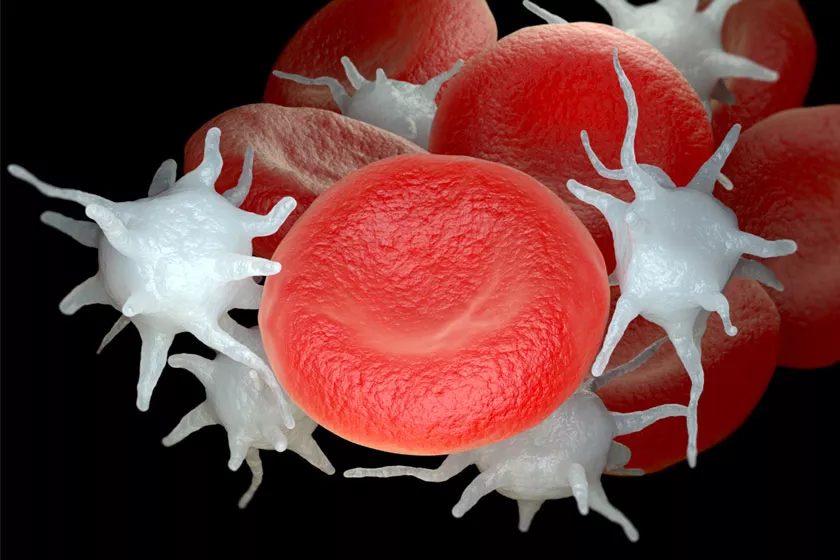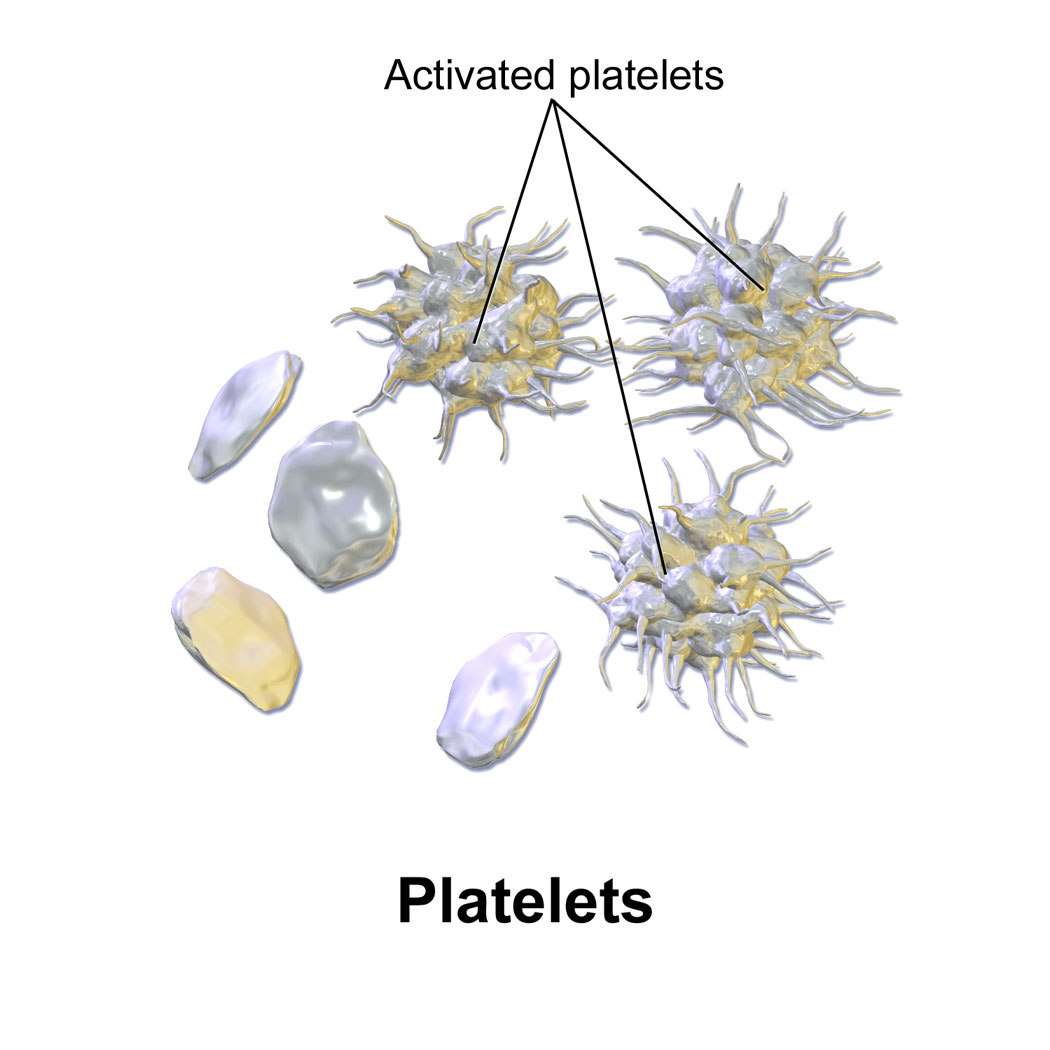WHAT IS THROMBOCYTOSIS?
Platelets are blood particles produced within the bone marrow that play an important role in the process of forming blood clots. Thrombocytosis is a disorder where your body produces too many platelets.
It is known as reactive thrombocytosis or secondary thrombocytosis when the cause is an underlying condition, like an infection.
Less commonly, when thrombocytosis has no apparent underlying condition as a cause, the disorder is known as primary thrombocythemia or essential thrombocythemia. It is a blood and bone marrow disease.
Your doctor may detect thrombocytosis in a routine blood test result that shows a high platelet level. If your blood test indicates thrombocytosis, it is important to determine whether it is reactive thrombocytosis or essential thrombocythemia to know how to manage the condition.
TYPES
Essential thrombocythemia
SYMPTOMS
People with thrombocytosis often do not have signs or symptoms. Signs and symptoms of reactive thrombocytosis, if they do happen, relate to the underlying condition.
People with essential thrombocythemia may have signs and symptoms related to blood clots and bleeding, including:
- Headache
- Dizziness or lightheadedness
- Chest pain
- Weakness
- Numbness or tingling of the hands and feet
WHEN SHOULD YOU SEE A DOCTOR?
Because thrombocytosis is not likely to cause symptoms, you probably would not know you have it unless a routine blood test reveals a higher-than-normal number of platelets. If that happens, your doctor will try to determine the reason.
CAUSES
Bone marrow — the spongy tissue inside your bones — contains stem cells that could become red blood cells, white blood cells, or platelets. Platelets stick together, helping blood to form a clot that stops bleeding when you damage a blood vessel, like when you cut yourself. Thrombocytosis happens when your body produces too many platelets.
REACTIVE THROMBOCYTOSIS
This is the most common type of thrombocytosis. It is caused by an underlying medical problem, like:
- Acute bleeding and blood loss
- Cancer
- Infections
- Iron deficiency
- Removal of your spleen
- Hemolytic anemia — a type of anemia in which your body destroys red blood cells faster than it produces them, often because of certain blood diseases or autoimmune disorders
- Inflammatory disorders, like rheumatoid arthritis, sarcoidosis, or inflammatory bowel disease
- Surgery or other types of trauma
ESSENTIAL THROMBOCYTHEMIA
The cause of this disorder is not clear but it often appears to be connected to mutations in a variety of genes. Your bone marrow produces too many cells that form platelets and these platelets are usually abnormal. This poses a much greater risk of clotting or bleeding complications than reactive thrombocytosis.
DIAGNOSIS
During an examination for a routine physical or another condition, your doctor may find that your spleen is enlarged or you have signs or symptoms of an infection or another condition. In that case, your doctor may order a complete blood count. This test could determine whether your platelet count is higher than normal.
Because a number of conditions could cause a temporary rise in your platelet count, your doctor likely will repeat the blood test to see if your platelet count remains high over time.
Your doctor may also order tests to check for:
- Abnormal levels of iron in your blood
- Markers of inflammation
- Undiagnosed cancer
- Associated gene mutations
You may also need a procedure that uses a needle to remove a small sample of your bone marrow for testing.
TREATMENT
REACTIVE THROMBOCYTOSIS
Treatment for this condition depends upon the cause.
- If you have had significant blood loss from a recent surgery or an injury, your elevated platelet count may resolve on its own.
- If you have a chronic infection or an inflammatory disease, your platelet count probably will remain high until the condition is under control. In most cases, your platelet count will return to normal after the cause has been resolved.
- If you have had your spleen removed (splenectomy), you may have lifelong thrombocytosis, but you are unlikely to need treatment.
ESSENTIAL THROMBOCYTHEMIA
People with this condition who do not have any signs or symptoms are unlikely to need treatment as long as the condition is stable. Your doctor may recommend that you take daily, low-dose aspirin to help thin your blood if you are at risk of blood clots. Do not take aspirin without consulting with your doctor.
You may need to take drugs or have procedures to lower your platelet counts if you:
- Have a history of blood clots or bleeding
- Have risk factors for heart disease
- Are older than 60
- Have a platelet count greater than one million
Your doctor may prescribe platelet-lowering drugs primarily in the form of hydroxyurea (Droxia, Hydrea) or interferon alfa (Intron A).
Platelets could be removed from your blood by a procedure that is similar to dialysis. A needle attached to a tube is placed in a vein and your blood is fed through a machine that filters out platelets. Then the filtered blood is returned to your body by an intravenous (IV) line. This procedure is used only in emergencies, like if essential thrombocythemia has caused a stroke.
If you or anyone you know is suffering from thrombocytosis, our expert providers at Specialty Care Clinics will take care of your health and help you recover.
Call us on 469-545-9983 to book an appointment for an at-home check-up.




